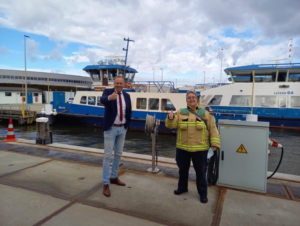- Latest news
- Database Update Crash Recovery System March 2025
- Online CRS Database: No more manual updates!
- Database Update Crash Recovery System February 2025
- Bliksund’s bold expansion
- Database Update Crash Recovery System January 2025
- Update in our Crash Recovery System
- Show or hide CRS buttons and categories
- Database Update Crash Recovery System December 2024
- Database Update Crash Recovery System November 2024
- Handle with Care: Navigating Complex Car Doors with CRS
- Latest news
- Database Update Crash Recovery System March 2025
- Online CRS Database: No more manual updates!
- Database Update Crash Recovery System February 2025
- Bliksund’s bold expansion
- Database Update Crash Recovery System January 2025
- Update in our Crash Recovery System
- Show or hide CRS buttons and categories
- Database Update Crash Recovery System December 2024
- Database Update Crash Recovery System November 2024
- Handle with Care: Navigating Complex Car Doors with CRS
Energy transition in the maritime sector
During the years we have been working with the Crash Recovery System (CRS), several enthusiastic users have provided us with ideas to refine the CRS in practice or to supplement it with specific vehicles.
One user, Hazardous Substances Advisor Jetty Middelkoop, is active in the Amsterdam Amstelland fire department.
“I am mainly a point of contact for my colleagues. Lately we have been very busy with energy transition. The fire department has been involved in this more and more, but it often finds itself lagging behind. This is why the CRS is becoming more and more important to us. I therefore regularly bring up ideas about including new vehicles in the CRS, such as, in this case, the electric ferry on the IJ in Amsterdam. As a ‘tester’ of the CRS in our region, I ask questions everywhere about vehicles that I am not yet familiar with. I first try to determine what I am dealing with by means of external characteristics, in order to then check it in the CRS. That said, I seldom get it right…”
IJ FERRY IN THE CRS
There are more and more electric boats. Diesel boats are no longer allowed on the canals of Amsterdam. We used to have a shipping company with canal tour boats running on CNG. At present, the big canal tour boats, the river boats and countless little boats nearly all have electric propulsion. Sometimes they even have solar cells!
“We have already had several incidents relating to them, whereby information appears to be very important. Even though if may be clear that a boat is electric, for risk assessment purposes it is very important to know, in the event of a fire, whether the batteries involved are lead or lithium-ion.”
This was a reason for Moditech, after Jetty put us in contact with the ferries’ manufacturer, to include the first ferry with alternative propulsion in the CRS.
“There are much larger battery packs on these ferries than on the little boats on the canals. Where a fire is concerned, it is very handy for the fire department to be able to look up the information on a ferry like this in the trustworthy CRS.”
ACCIDENTS WITH A FERRY
“So far we have not yet had a fire on a ferry. There have been collisions. A violent crash could lead to unstable batteries, just like with a car crash. Battery problems, whether or not in combination with fire, are a big cause for concern for the fire department.”
In the case of a thermic runaway in a battery pack, there can be a risk of explosion due to the release of vaporized electrolytes. It is therefore very important that firefighters know how a boat like that is put together. What batteries are present? Where are they located and what safety provisions are there? Does the battery area have a detection system in place? Where can you read it out? Is there an automatic extinguisher system? Are ventilation provisions present that could prevent a gas explosion – and where are the gasses vented to the outside? All information that can contribute to a responsible approach.
FURTHER IMPROVEMENTS IN THE SUSTAINABILITY OF THE MARITIME SECTOR
In the canals of Amsterdam, only electric boats are permitted now. On the larger waterways, the number of electric boats will also rapidly increase. Within this context, it is possible to imagine ships with exchangeable battery containers on the deck, some also with solar cells. The first deck hatches with high capacity solar panels are already available. In addition, there will be ships propelled by hydrogen. Both with fuel cells and with hydrogen as direct fuel in a combustion engine.
“I would like to see all these types of watercraft make their way into the CRS. All means of transportation in the same way, in one system that firefighters are already familiar with”, Jetty says.
Crash Recovery System – Know what’s inside, see what to do!






